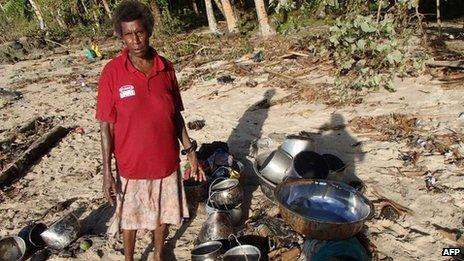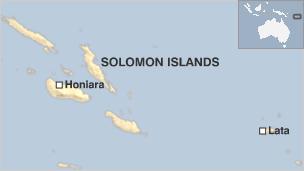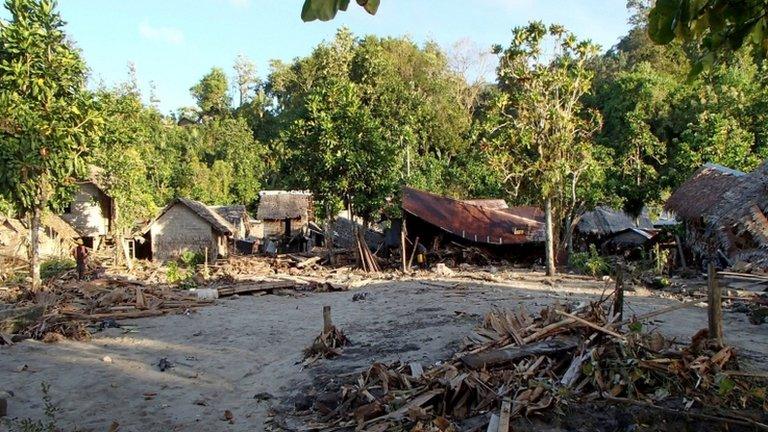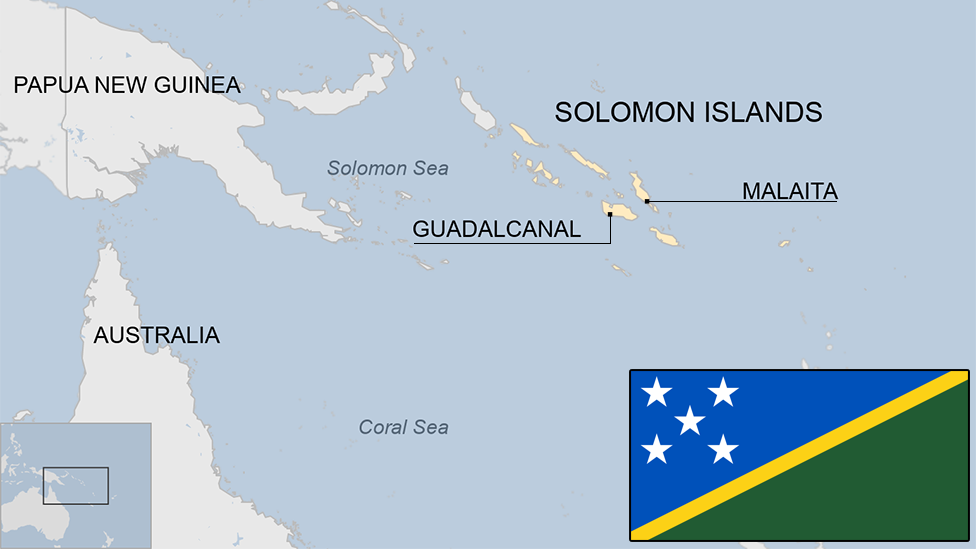Aftershocks hit Solomon Islands relief work
- Published

Coastal villages have been badly hit, leaving many with no shelter
Aftershocks are continuing to rock the Solomon Islands, hampering relief efforts after a quake and tsunami.
A 7.1 magnitude aftershock hit late on Friday, but the Pacific Tsunami Warning Center said there was no indication another tsunami was caused.
An earlier aftershock damaged roads in Lata, a town on the Santa Cruz Island in the far east of the Pacific nation, which was badly hit by the waves.
At least 13 people are thought to have been killed by Wednesday's tsunami.
It was triggered by a magnitude 8.0 quake under the sea and flattened several villages on the western coast of Santa Cruz Island.
Officials say thousands of people have been left homeless.
They say assessing the level of damage is taking time because of the very remote location of the island and debris on its airstrip.
On Friday, a plane carrying Prime Minister Gordon Darcy Lilo had to return to the capital, Honiara, because of concerns over runway damage, his spokesman said.
The plane, which was also carrying vital aid, later landed successfully said Andrew Catford, the Solomon Islands director for the relief agency World Vision.
He told the Associated Press that Lata was "like a ghost town" and that the recent aftershocks had left people "very concerned".
"We've had over 115 aftershocks, but unlike all the others, this one moved vertically up and down. For the first time, it's created cracks in the roads," he said after a 6.6 magnitude shock on Friday morning.
'Need assistance'

George Herming, a spokesman for the prime minister, said the aftershocks meant that residents were staying away from the coast.
"Many of them have lost their homes and they have no shelter at the moment," the Associated Press news agency quoted him as saying.
"They are still residing on high ground because of the fear of the aftershocks."
A spokesman for the national disaster management office told AFP news agency that more villages had been affected than previously thought.
"At first we thought it was going to be quite small but now it looks like it's going to be very big and communities will not be able to handle it themselves," Sipuru Rove said.
"This is where we might require external assistance."
Australia says it is sending an air force plane to help with aerial assessments of the damage. It has also pledged A$300,000 ($309,000:£196,000) to the relief effort.
New Zealand has already pledged NZ$200,000 ($167,000: £106,000). Two boats carrying supplies are also sailing from Honiara.
- Published7 February 2013

- Published21 May 2024
